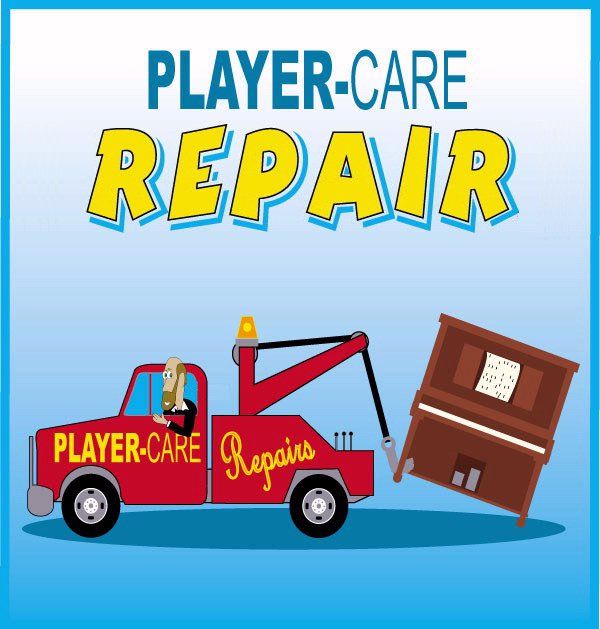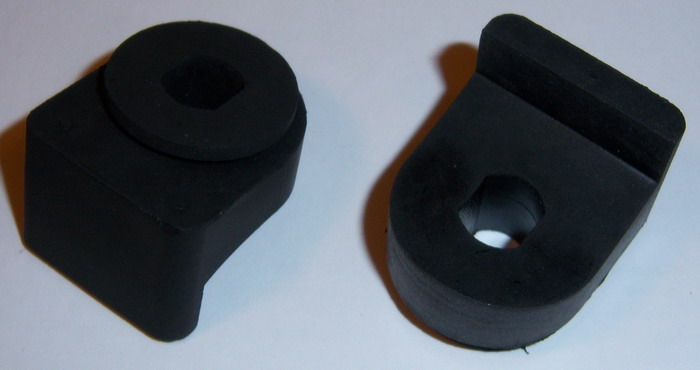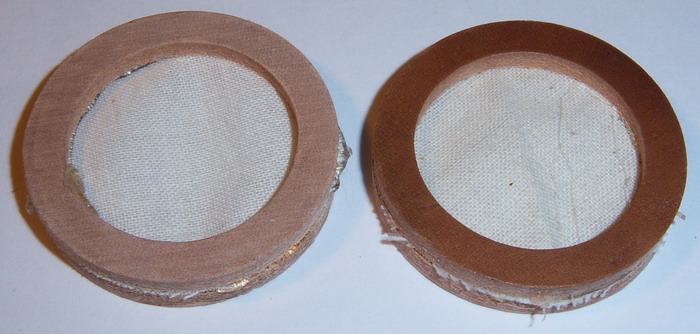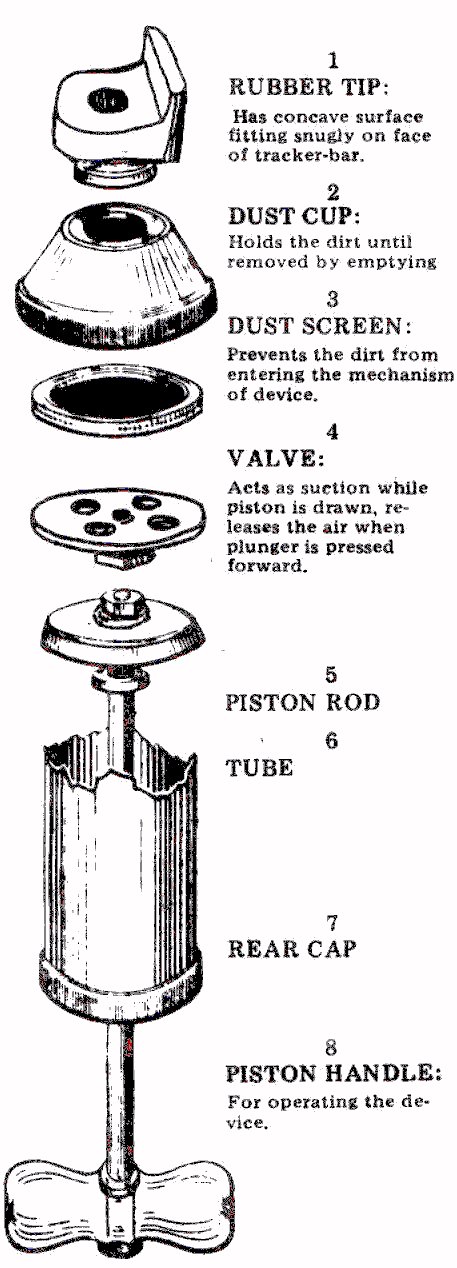
|

|

|

|

|

|
| Home | Manuals | Supplies | Search | Consult | Contact | Testing | Service |
|
The 'Kissing' Technique As a rule of thumb, the trackerbar should be pumped out every eight playing hours. Each roll is about 3+ minutes long. So 'Pump the Bar' after about every 100 or so plays. Keeping the 'Bar' clean is very important. It prevents weak and/or silent notes that result from paper dust and chad (those nasty little pieces of paper that hang on to a punch card) that get sucked into the holes in the trackerbar. It also helps insure Good Roll Tracking (See Pictures).
(Enter the item name and quantity desired when filling out the form.) (Minimum shipping cost is $11.90.) Having pumped out thousands of trackerbars, I have developed an extremely effective technique that develops the most suction you and the pump can create. The technique is called the 'Kissing Technique' because of the sound that occurs once you've mastered the technique. Start by pushing the piston handle all the way 'in'. Press the rubber tip tightly against the trackerbar. With your other hand, pull the piston handle 'out' very smartly, the faster the better. As you reach the top of the 'out' stroke, allow the force of the stroke to pull the rubber tip off of the trackerbar. Move the 'pump' away from the piano, then push the piston handle back 'in'. You'll know you've got this technique right when you hear a 'kissing' sound as the rubber tip comes away from the trackerbar. (The sound you hear is the vacuum, created by the pump, escaping to the atmosphere.) Repeat this process for every hole on the trackerbar. If present, pay particular attention to the outermost holes on the 'bar'. These holes are typically used for 'roll tracking', and since they are next to the edge of the paper, they suck in the most debris. (That's because the edge of the paper is where most of the wear occurs.) After completing one pass over all the holes, clean the dust screen and repeat the entire process again. Continue repeating the process until the filter is free of any debris. On average, it will take three complete passes before the majority of paper dust is removed from the player system. While the YouTube video at this link -click here was recorded in French, it shows how to place the trackerbar pump on the trackerbar and how to open it for cleaning the filter after the debris has been pump out. HOWEVER, I disagree with the way the piston is being used. Pulling the piston out very smartly (quickly) creates much more vacuum (over 120" WC), which pulls out the debris that's deep within the stack (windchest). Why is a trackerbar pump better than a vacuum cleaner at cleaning out the paper dust and debris that gets sucked into the player system? Most simply put, a vacuum cleaner doesn't develop enough suction to do the job. The trackerbar pump can develop up to 200 inches of water vacuum and the rubber tip, which seals against the trackerbar, focuses that vacuum to 2-3 holes on the trackerbar at a time. A very strong vacuum cleaner develops 60-80 inches of water vacuum and it doesn't seal against the trackerbar. Also, even with a crevice tool, the vacuum is trying to clean 6-8 holes at a time. Doing a little quick math and assuming that you "were" able to create a seal with the vacuum cleaner and the trackerbar, the trackerbar pump is a minimum of five times more effective at cleaning out the paper dust and debris that gets sucked into the system. In reality, it's about ten times more effective. Personally speaking, I have proven this to customers many, many times. In one instance, a customer with an expensive central vacuum system, that produced 120 inches of water vacuum, challenged me to a test. She used her vacuum and the crevice tool to clean out the trackerbar and then smiled at me as I took out my little trackerbar pump. Before I started, I showed her that the filter was clean, and then I made one complete pass across the bar, which took just over a minute. Then I showed her what was in the filter. She bought the pump!
 Replacement Rubber Tip - $12.95 ea. TIP: When replacing the tip, try applying a little Vaseline to the edge that goes into the hole. Insert as much of the edge as you can into the hole. Then push on the tip and twist the top into the hole. It's almost like what you had to do when putting a tire on a wheel -back in the old days...
 Replacement Filter - $8.85 ea.
 Trackerbar Pump - $71.00 ea.
It has come to our attention that the filter and the rubber tip are not exactly the same as those that are in the KLEERNOTE trackerbar pumps that were made by American Device Mfg. Co. in St. Louis, MO, in 1916. These trackerbar pumps were mostly sold by Ampico. Their filters are 1-9/16" in diameter and our replacements are 1-7/16" in diameter. Also, their filters are slightly less than 1/8" thick and ours are 1/4" thick. Point being, they don't fit properly. However, the filter can be modified to fit. If interested in how that's done, send me an email. August 5, 2024: Picture and comment from a customer. "Just received the tracker bar pump in the mail. Tried it out on my new piano and this is what came out of the filter!" My reply: "And that was probably on the first pass. Typically, the 'bigger' pieces of 'chad' will be sucked out on the 3rd or 4th pass. Performance will definitely improve as the lines get cleaned out." Their reply: "Did 3 passes. Still working on the 'technique'." (NOTE: Their piano is a modern Aeolian that was built in the early 1980's.)

Questions: Send an E-Mail to: John A Tuttle contact you via E-Mail (or by Phone) and ask for a confirmation. Incomplete requests will be Ignored!!! |
|
|
Since "Player-Care" is an internet business, I prefer that we correspond via E-Mail (click here to fill out the 'Request Form'). However, if I'm not in the middle of some other activity, you can reach me at 732-840-8787. But please understand that during the hours from 8AM-5PM EST (Mon-Sat), I'm generally quite busy. So, I probably won't answer the phone. If you get the answering machine, please leave a detailed message stating the reason for your call. Also, repeat your name and phone number clearly and distinctly. By necessity, I prioritize everything in my life. And, if you call and just leave your name and number, and ask me to call you back, it might be a day or two before I return your call. Why? Because I don't know why you want me to call and I might not be prepared to assist you in an effective and efficient manner. If you leave me an E-Mail address (which I prefer), spell it out phonetically. The more you do to help me, the more I can help you in return. Don't rush. You have four minutes to record your message. |
|
407 19th Ave, Brick, NJ, 08724 Phone Number 732-840-8787 (Voicemail Only, No Texts) |
